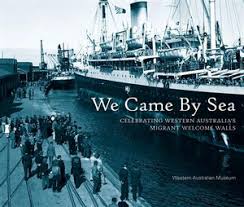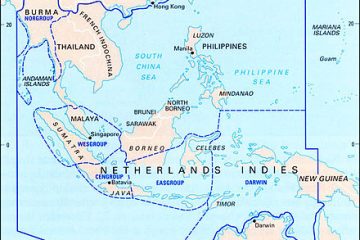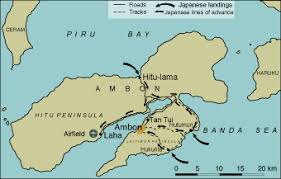A basic Australian history questionnaire
Noel Jackling
The term ‘Australia’ is used in a broad sense to include its earlier names.
1. Who was the first known European skipper to reach Australia? What was the name of his ship and which part of Australia did he touch upon? In what year?
- Dutchman Willem Janszoon
- Duyfken (little dove)
- West coast of Cape York Peninsula, not far from the present Weipa.
- March 1606
- Quite likely Janszoon thought it was an extension of New Guinea.
2. Who was the second known European skipper to reach Australia? What was the name of his ship and which part of Australia did he touch upon? In what year?
- Spaniard Louis Vaez de Torres. Ships San Pedro and Los Tres Reyes. From 1–9 October 1606: sailed through the Torres Strait, east to west.
- Torres probably saw Cape York, but did not land on it. The route he took through the strait is a matter of debate. It is considered possible that he landed on Dungeness Island, a coral island that is part of Queensland and Yama Island, also part of Queensland, both a significant distance north of the tip of Cape York.
- It is a moot point as to whether Torres ‘reached’ Australia. But it is safest to say that the third known European skipper to reach Australia was:
- Dutchman Dirk Hartog, Eendracht. Shark Bay, WA. The island is now known as Dirk Hartog Island. Hartog inscribed a pewter plate, which he left nailed to a pole at Point Inscription. The area came to be known by the Dutch as Eendractsland. 25 October 1616. 400th anniversary was in 2016. The King and Queen of the Kingdom of the Netherlands came to Australia to commemorate the occasion.
3. Who was the first European to circumnavigate Australia?
Dutchman Abel Tasman. 1642–43.Abel Tasman reached parts of the west and east coast of what he called Van Diemen’s Land, named after the Governor-General of the Netherlands East Indies. A flag was planted and the territory claimed for the Netherlands.
The Netherlands, with a population of 17m, is two-thirds the size of Tasmania.
Much later, Matthew Flinders circumnavigated mainland Australia and separately circumnavigated the island that is named after him and is now known as Tasmania.
4. What is the oldest European structure built in Australia and where is it located?
The oldest surviving building in Australia is Wiebbe Hayes Stone Fort on West Wallabi Island, an island in the Wallabi Group of the Houtman Abrolhos, in the Indian Ocean off the west coast of mainland Australia. It was built by survivors of the Batavia shipwreck and massacre in 1629 as a defensive fort and shelter against mutineers from the Batavia shipwreck.
5. Was Captain James Cook’s Endeavour:
(a) The first European ship to reach Australia?
(b) In the first 10 European ships to reach Australia?
(c) In the second 10 European ships to reach Australia?
(d) In the third 10 European ships to reach Australia?
(e) In the fourth 10 European ships to reach Australia?
(f) Beyond the first 40 European ships to reach Australia?
The Endeavour was about the 45th European ship to reach Australia. See: http://www.australiaonthemap.org.au/landings-list/
6. In what ship and in what year is the first European woman known to have reached Australia?
There are no crew or passenger lists for the Duyfken or the Eendracht. In 1623, Dutchman Claes Hermanszoon in the Leijden landed south of Dirk Hartog Island, and Australia’s first European baby was born there. And ‘where there’s a baby born a woman is often not far away’. The name of the woman and the baby are not known.
There were women aboard the shipwrecked Batavia in 1629. Much has been written about that horrendous event.
7. What was the airline company that made the first commercial passenger flight from Europe to Australia?
KLM Royal Dutch Airlines Douglas DC-2 Uiver, which departed Mildenhall just out of London on 20 October 1934 and arrived at Laverton, Melbourne on 24 October 1934. The Uiver was the 46th aircraft to fly to Australia. The first Dutch aircraft to fly to Australia was the Fokker trimotor Abel Tasman in 1931, which was the 18th aircraft to fly to Australia.
8. Imperial Airways and Qantas Empire Airways combined to provide the first scheduled air service from Europe to Australia. What company/companies provided the second scheduled air service from Europe to Australia?
- KLM Royal Dutch Airlines flew the Amsterdam (Schiphol) – Batavia (Jakarta) sector. KNILM (Koninklijke Nederlandsch-Indische Luchtvaart Maatschappij or Royal Netherlands Indies Airways flew the Batavia – Sydney sector.
- The first scheduled KLM–KNILM service to Australia from Schiphol to Sydney, was inaugurated by a KLM flight in Douglas DC-3 PH-ARE Emoe (Emu) 28 June–3 July 1938 from Amsterdam (Schiphol) to Batavia (on Java) with a connecting KNILM flight in Lockheed 14-WF62 Super Electra PK-AFM 3–5 July 1938 from Batavia to Sydney.
- KNILM was the first foreign airline to receive permission from the government of the Commonwealth of Australia to operate a scheduled service into Australia.
- The second pilot on Emoe was Swedish Count Carl Gustaf Ericsson von Rosen, Von Rosen was a nephew of the wife of German Herman Göring, an ace during The Great War and later head of the Luftwaffe in World War II. Von Rosen’s interest in flying machines was partly influenced by Göring.
9. In World War II, which were the two countries that provided the greatest assistance to Australia in stopping the southward thrust of the forces of the Japanese Imperial Army in New Guinea?
USA and the Netherlands. I am not an expert in this area, but the following will give a broad picture. Advice on any inaccuracies would be welcome.
The Dutch played a major role in the tragic Battle of the Java Sea in February-March 1942, which was a major loss for the Allies. Such air cover as the Allies had was substantially eliminated in the first few days of the battle, leaving allied war ships exposed to attack from the air by the Japanese.
The Netherlands East Indies (the Dutch were our nearest neighbours) was overrun by the Japanese, except for the southern part of Dutch New Guinea. Australian-based Dutch operations followed. These included:
• Three old submarines in Fremantle used for training.
• NEI Squadron 18, RAAF Squadron 119 and the re-formed Squadron 120. These were Dutch squadrons.
• 500 KNIL (Dutch army) troops at Merauke, Dutch New Guinea stopped the Japanese advance similarly to the Australians stopping the Japanese at Port Moresby.
• Over 70 KPM {Koninklijke Paketvaart-Maatschappij) merchant ships that handled 100,000 troop movements to New Guinea and over 1,000,000 tonnes of guns, ammunitions and supplies.
• Dutchman Flight Lieutenant Gus Winckel is famous for having shot down a Japanese aircraft at Broome on 3 March 1942 from the ground using a machine gun, and is credited with having bombed and sunk a Japanese submarine off the east coast of Australia on 5 June 1942.
10. Which company is the oldest airline in the world still flying under its original name?
- KLM Royal Dutch Airlines (Koninklijke Luchtvaart Maatschappij—literally, Royal Aviation Company) formed in 1919.
- Qantas is the oldest airline in the English speaking world (formed in 1920).
- Avianca Columbia can trace its origins back to 1919 but under a different name.
Noel Jackling OAM
After retirement as a lawyer and university lecturer in Instructional Design, Noel Jackling redirected his attention to matters of history. Since 2010, he has focused on the story of the KLM Royal Dutch Airlines ‘Uiver’ and its place in our shared Dutch–Australian heritage. His research led to major additions to the Uiver collection at the Albury Library-museum, and successful advocacy for its listing on the NSW State Heritage Register.
In 2018, the Kingdom of the Netherlands honoured Noel by investing him as a Ridder (Knight) of the Order of Oranje-Nassau. In 2020, Noel was awarded an Order of Australia Medal for his services to community history.
Noel is currently documenting connections between the Albury Post Office and the Uiver, with a view to upgrading Heritage Listings for the Albury Post Office. His dream is for the first floor of the Albury Post Office to be converted into a telecommunications museum, representative of the ABC’s 2CO Studio and the Albury telephone exchange that operated there in the 1930s.


